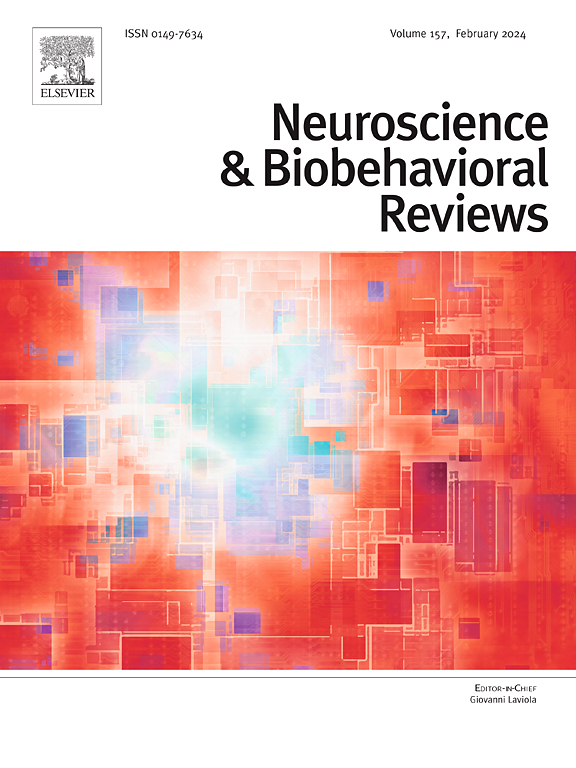Association of childhood adversity with HPA axis activity in children and adolescents: A systematic review and meta-analysis
IF 7.5
1区 医学
Q1 BEHAVIORAL SCIENCES
引用次数: 0
Abstract
Childhood adversity (CA) is associated with alteration of the hypothalamus-pituitary-adrenal (HPA) axis. We conducted a meta-analysis to synthesize existing evidence on the association between CA and HPA axis activity among children and adolescents and investigate four research questions: (1) Is CA associated with different aspects of the HPA axis (i.e., diurnal cortisol, acute stress response, chronic cortisol levels)?, (2) Does this association vary by the child’s age?, (3) Are threat and deprivation dimensions of CA differentially associated with HPA axis activity?, and (4) Does this association depend on both the dimension and timing of CA? Meta-analyses were conducted with 129 studies reporting 506 effect sizes. Results showed significant associations between CA with higher afternoon cortisol levels (r = 0.053), a flatter diurnal slope (r = 0.048), more blunted reactivity (r = –0.043), and higher hair cortisol concentration (r = 0.098), but not other cortisol indicators (morning cortisol, cortisol awakening response, daily output, and cortisol recovery). Older children and adolescents had more pronounced blunted reactivity and steeper recovery with CA than younger children. Threat and deprivation did not differ in overall impact for any cortisol indicator; however, there are timing-dependent associations specific to threat or deprivation for some cortisol indicators. For instance, threat was associated with heightened reactivity when occurred before middle childhood, and with blunted reactivity when occurred after age 15 years; in contrast, deprivation was associated with blunted reactivity regardless of its timing. Findings could inform targeted interventions to reduce negative impacts of CA on development.
儿童和青少年童年逆境与下丘脑轴活动的关联:一项系统回顾和荟萃分析
童年逆境(CA)与下丘脑-垂体-肾上腺(HPA)轴的改变有关。我们进行了一项meta分析,以综合儿童和青少年中CA与HPA轴活性之间的关联的现有证据,并调查了四个研究问题:(1)CA是否与HPA轴的不同方面(即每日皮质醇,急性应激反应,慢性皮质醇水平)相关?(2)这种关联是否因孩子的年龄而异?(3) CA的威胁维度和剥夺维度与HPA轴活动是否存在差异?(4)这种关联是否取决于CA的维度和时间?对129项研究进行了荟萃分析,报告了506个效应量。结果显示,CA与较高的下午皮质醇水平(r = 0.053),较平坦的日斜率(r = 0.048),更钝的反应性(r = -0.043)和较高的毛发皮质醇浓度(r = 0.098)之间存在显著关联,但与其他皮质醇指标(早上皮质醇,皮质醇觉醒反应,每日输出和皮质醇恢复)无关。年龄较大的儿童和青少年比年龄较小的儿童有更明显的钝化反应和更陡峭的恢复。威胁和剥夺对任何皮质醇指标的总体影响没有差异;然而,对于某些皮质醇指标,威胁或剥夺存在特定的时间依赖性关联。例如,威胁发生在儿童中期之前时,与反应性增强有关,而发生在15岁以后时,与反应性减弱有关;相比之下,剥夺与迟钝的反应有关,与时间无关。研究结果可以为有针对性的干预提供信息,以减少CA对发展的负面影响。
本文章由计算机程序翻译,如有差异,请以英文原文为准。
求助全文
约1分钟内获得全文
求助全文
来源期刊
CiteScore
14.20
自引率
3.70%
发文量
466
审稿时长
6 months
期刊介绍:
The official journal of the International Behavioral Neuroscience Society publishes original and significant review articles that explore the intersection between neuroscience and the study of psychological processes and behavior. The journal also welcomes articles that primarily focus on psychological processes and behavior, as long as they have relevance to one or more areas of neuroscience.

 求助内容:
求助内容: 应助结果提醒方式:
应助结果提醒方式:


